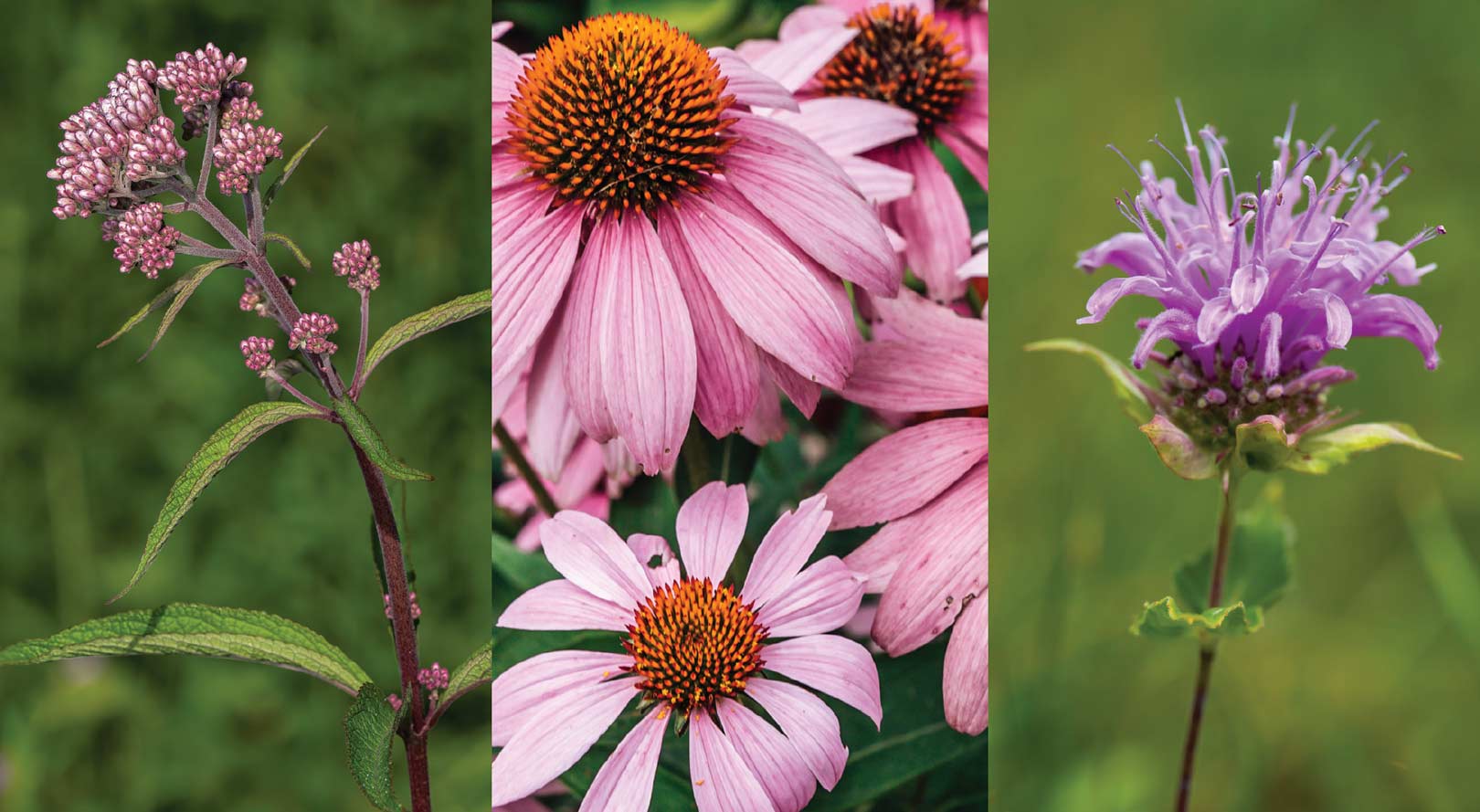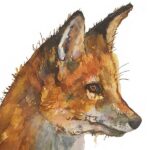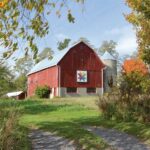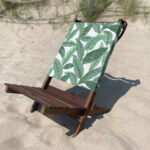
Adding an attractive new dimension to your garden while helping out pollinators can be as easy as taking a fall hike along local back roads or strolling through fields of native plants.
More gardeners are turning to local native plants to support pollinating insects and – by extension – the birds that feed on them, helping to counter declines in insect and avian populations. A side benefit, not to be taken lightly, is that native plant species are generally hardy and will add beauty and interest to your garden.
But where to get them? Big box stores and supermarkets don’t carry native species. A good local nursery may offer a few, but you’ll have to make sure that the varieties they sell are “straight native” and not “nativars.” Nativars are often bred for floral colour and size – attributes that make them more attractive to gardeners but will render them useless for some pollinators, which have developed very specific relationships with native plants.
A good field guide to native plants (listed below), an enquiring mind and a healthy interest in exploring backroads will go a long way to help you find native plant species that will benefit the local ecosystem in your backyard next summer. Once you learn to recognize plants that interest you, you’ll be surprised at the number hiding in plain sight along rural ditches and forest edges.
Now that it is late summer, there is an opportunity to collect seeds from the native plants that have finished blooming on our roadsides. To get you started, let’s have a look at four of those plants that would look great in your garden next year – their seeds are readily available – and where you might find them.
If you’re collecting seed, be careful not to take more than 10 percent of what you find. The plants in the wild exist because that is where they are meant to be, so you definitely shouldn’t disturb their place in the ecosystem by digging them up.
With those caveats in place, you’re ready to start.
JOE-PYE WEED
You can find Joe-Pye weed in mesic or moist areas such as ditches and wetland edges. It is easily identifiable by its long-blooming large pink flowerheads – much loved by butterflies – and great height, up to 12-feet tall! In your garden, you’ll need enough space to accommodate its size, relatively moist soils, and perhaps some shade. Once the stems are perfectly dry and the seed heads are fluffy, an easy harvest method is simply to shake the seed heads into a paper bag, eliminating much of the need for later cleaning.
PURPLE CONEFLOWER
Purple coneflower, found in open meadows and areas of tallgrass prairie such as the Rice Lake Plains, is popular with gardeners who love its colour and want to attract and support bees and butterflies. The seedheads also provide natural forage for songbirds such as goldfinches, which will devour them. When the flowers have dropped and the plants are dry you can try to manually separate their seeds from the prickly heads or opt for the less painful method of dropping the seedheads into a coffee can and giving it a good shake for 20 seconds or so. Remove the now-empty heads and you’ll be left with mostly seeds and a small bit of chaff.
MILKWEED
The importance of milkweed to monarch butterflies can’t be overstated. Milkweed is the sole host plant and food source for monarch caterpillars. Although toxic to some animals, milkweed is a powerhouse food source for insects, feeding about 450 different species. You can find this ecosystem wonder along fencerows, roadsides, fields and pastures, where it is readily identifiable by its fat pods, bursting with seed this time of year. It’s ready to harvest when the pod splits easily under finger pressure. Scrape the brown seeds away from the silky material by hand or try putting the silk and seeds inside a paper bag, adding a few stones or coins, and giving it a shake. Cut a small hole in the bottom of the bag to pour the seeds out.
WILD BERGAMOT
Wild bergamot is yet another pollinator magnet, attracting hummingbirds, butterflies, several species of bees and wasps. It grows in a variety of habitats including prairie areas, forest edges, wet meadows and ditches, thriving in a wide range of soils. Seeds typically mature one to three weeks after flowers bloom. Test for maturity by bending the stem over a bag and tapping it. If brown seeds fall into the bag, you’re ready to go!
If you’re collecting seed, be careful not to take more than 10 percent of what you find. The plants in the wild exist because that is where they are meant to be, so you shouldn’t disturb their place in the ecosystem.
THE COLD TREATMENT
Many of the non-native seeds we buy from nurseries and big box stores have their origins in climates warmer than our own, so some gardeners have developed the notion that all seeds and young plants are meant to be kept warm and coddled in greenhouse conditions during their early lives. For many native seeds, the opposite is true. Having evolved to survive winter conditions they require a period of cold, or “stratification,” in order to break seed dormancy. In the wild, dormancy is usually overcome when the seed spends time in the freezing winter ground, which breaks its hard coat and triggers its embryo.
The importance of milkweed to monarch butterflies can’t be overstated. Milkweed is the sole host plant and food source for monarch caterpillars. Although toxic to some animals, milkweed is a powerhouse food source for about 450 different species.
Gardeners can simulate natural processes under controlled conditions in their refrigerator by subjecting the seeds to a cool environment – ideally one to three degrees Celsius for a period of one to three months. Seeds can be soaked in cold water for six to twelve hours before being placed in a medium such as vermiculite, peat or sand and refrigerated in a plastic bag or sealed container. The length of time you stratify depends on the plant species. Milkweed, coneflower and Joe-Pye weed all need four or five weeks. Bergamot can be stratified for 30 to 60 days, although it can also be direct-seeded without stratification in April or May.
How you choose to stratify your native plant seeds depends on factors that include your inclination and the available room in your refrigerator. The internet abounds with information on approaches ranging from simply planting your seeds in pots and leaving them outside to variations on the refrigerator method; there is even winter sowing in repurposed milk jugs, left outside, which over time will both stratify the seeds and operate as mini greenhouses as things warm up – an approach I’m planning to try this year after mixed results with leaving my seeds outside last winter.
Collecting native seeds is a great reason to go exploring this fall, and germinating those seeds through stratification will provide avid gardeners with a chance to learn, experiment and develop new approaches.
Story by:
Norm Wagenaar




